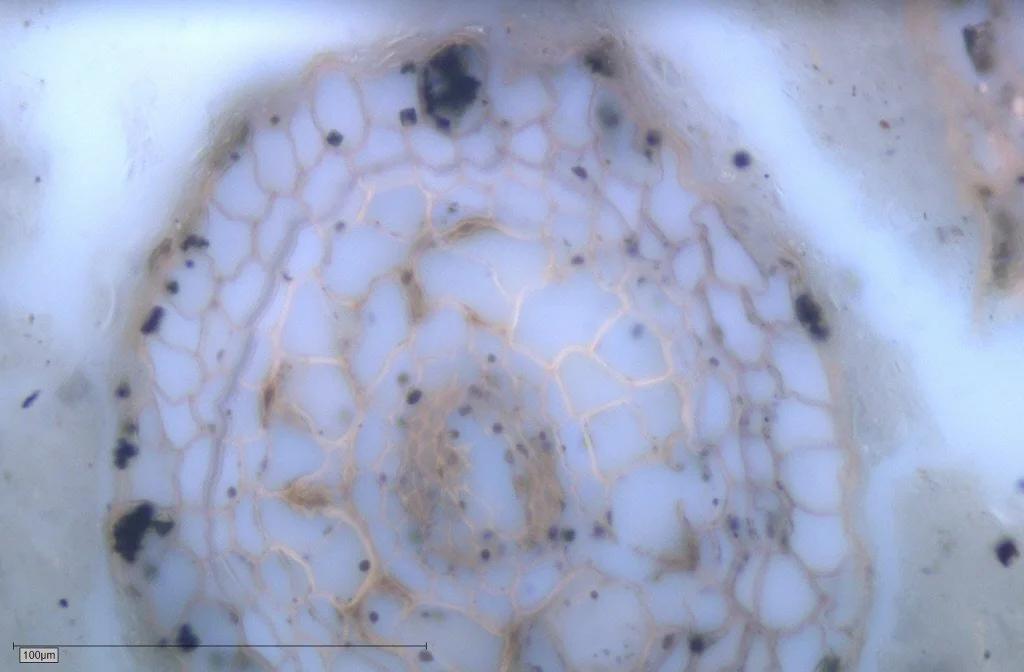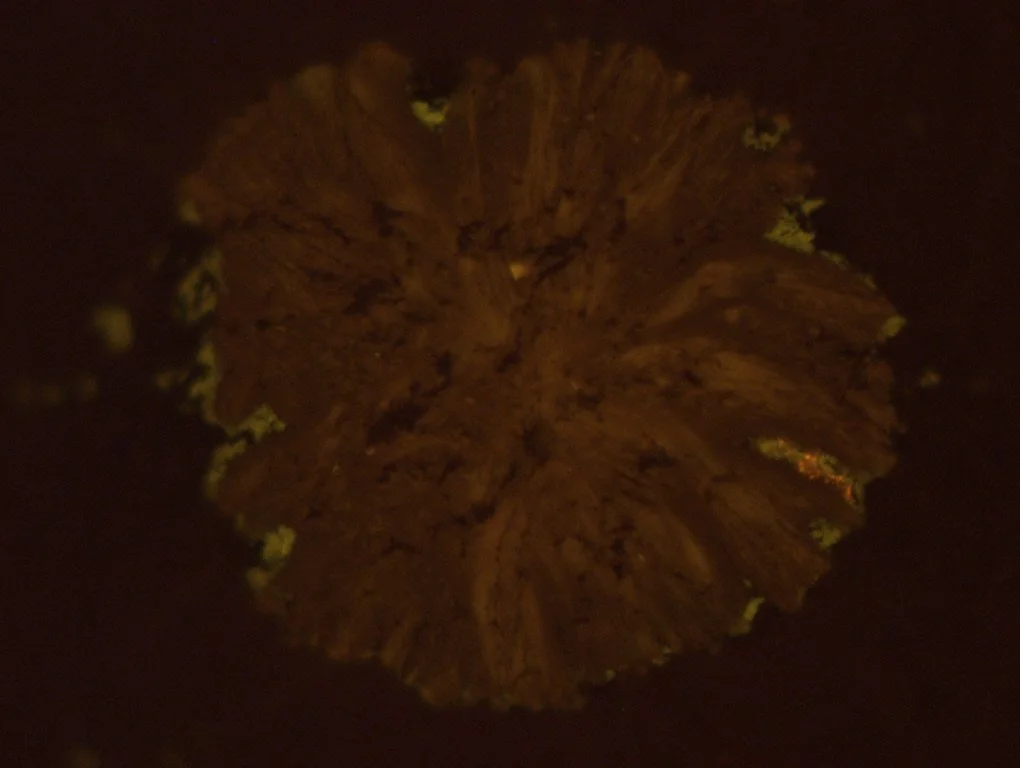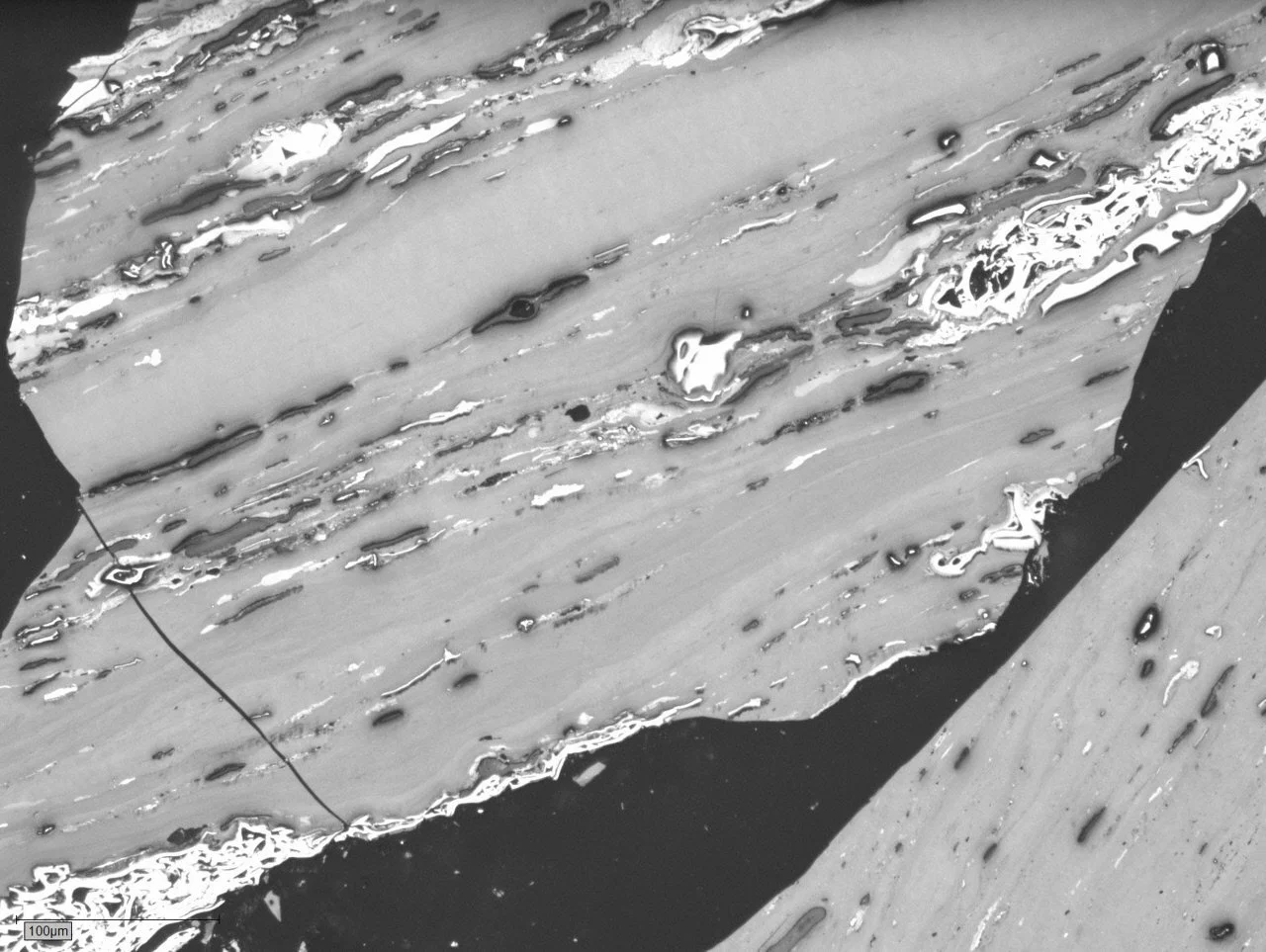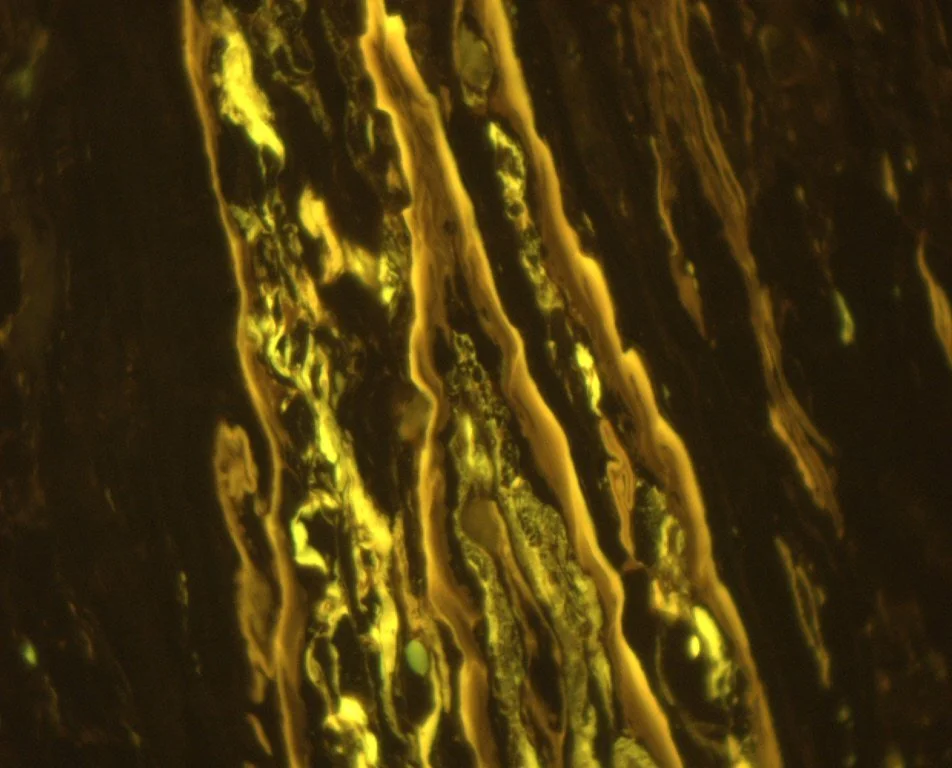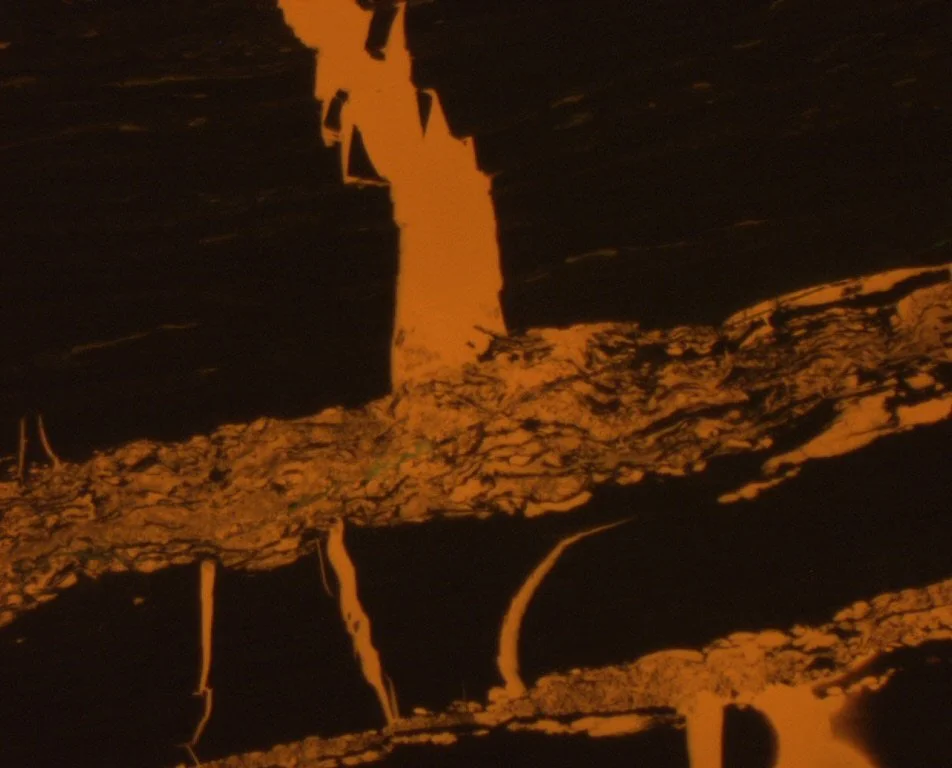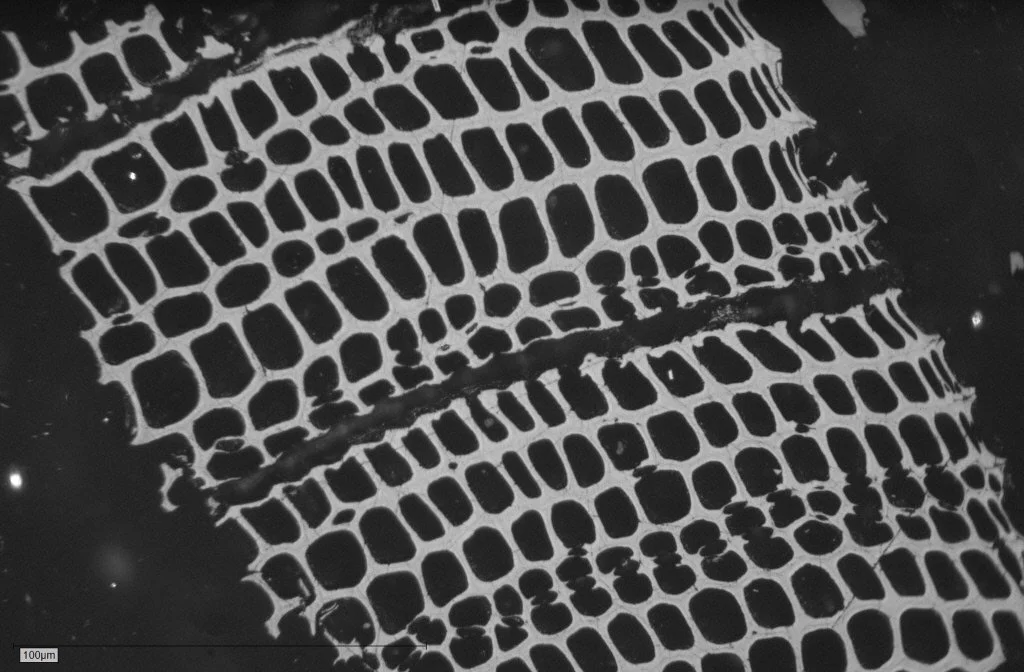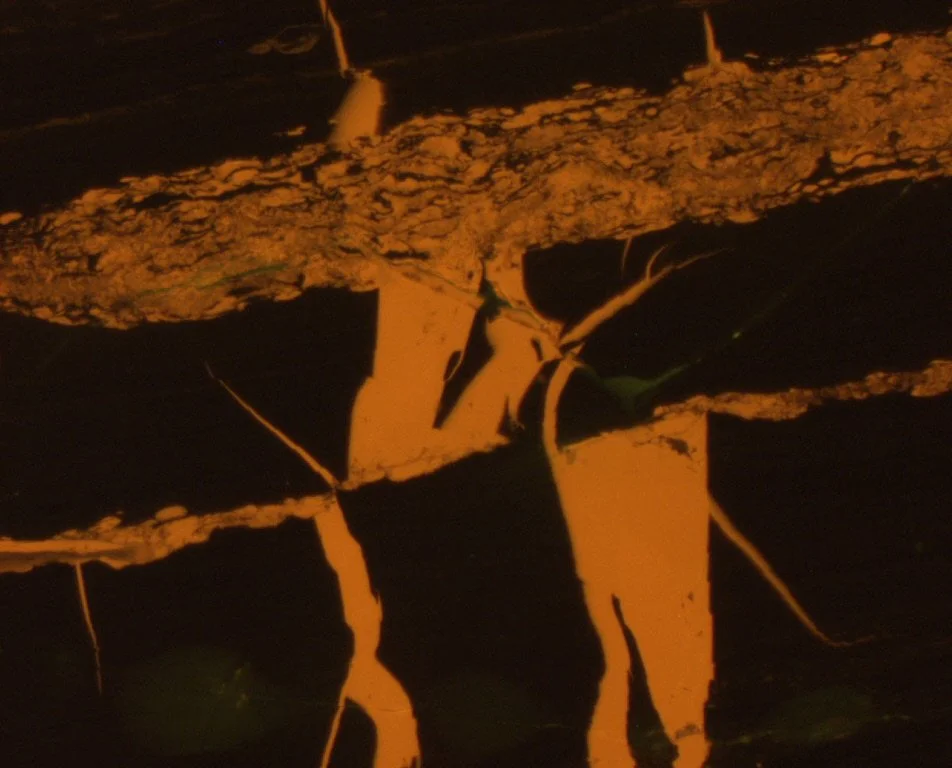
Coal
Coal — A material of structure, history, and behaviour
Coal is not just “plant matter that turned into fuel.”
It is an archive of biological input, diagenesis, and geologic forcing.
At the microscopic scale, this archive is expressed as maceral assemblages whose composition governs performance, reactivity, and thermal behaviour.
Understanding coal begins with structure.
What petrography reveals
Coal petrography examines the microscopic constituents of coal: vitrinite, inertinite, and liptinite, along with mineral components.
These components are not merely descriptive. They are diagnostic of:
rank evolution and thermal maturity
depositional environment
oxidation, wildfire, or hydrothermal alteration
coking behaviour and coke failure
variability in ash yield and degradation
influence of minerals on processing outcomes
Petrography answers why a coal behaves the way it does — not simply what it contains.
Coal macerals: inertinite (white), vitrinite (grey), liptinite (dark grey/brown). German Creek Coal Measures, Bowen Basin, Australia. Photomicrograph taken in reflected white light.
Rank is not a number — it is a trajectory
Reflectance is widely used to estimate rank, but it is not a static property.
It captures transformations driven by:
temperature
pressure
time
fluid interaction
strain and deformation
A histogram of vitrinite reflectance incorporates heterogeneity and records what the rock has endured, not just its current state.
Cutinite (from the liptinite group) representing preserved leaves. Walloon Coal Measures, Surat Basin, Australia. Photomicrograph taken in fluorescent mode.
Composition controls application
Different maceral groups push coal toward different uses:
Vitrinite-rich coals: reactive; used in metallurgical and thermal pathways
Inertinite-dominant coals: resistant; linked to paleofire, oxidation, coke anisotropy, and char behaviour
Liptinites: hydrogen-rich precursors influencing liquefaction, devolatilization, and unconventional carbon products
The maceral balance informs design decisions, not theoretical classifications.
Exsudatinite filling fractures. It is a indicator of oil generation in coal. In this case, exsudatinite is being generated from resinites. Laura Basin, Australia. Photomicrograph taken in fluorescent mode.
Why this matters
Coal analysis is routinely reduced to proximate/ultimate values or bulk geochemistry.
These alone cannot explain:
unanticipated ash
variable coking behaviour
blend instability
anomalous devolatilization
failure during combustion or gasification
Microscopy reveals the causes, not just the symptoms.
Fusinite maceral showing tissue preservation. Possible origin from paleofires. Location unknown. Photomicrograph taken in reflected white light.
What CarbonMat does with coal
Vitrinite reflectance measurements (ISO/AS compliant)
Maceral group and subtype identification
Mineral matter mapping and interpretation
Alteration diagnostics (oxidation, thermal events, wildfire signatures)
Integrated analysis with FTIR/Raman/SEM-EDS when required
You receive:
quantitative data
interpretive insights
implications for your operation or research
Not descriptions — meaning.
Typical applications
Rank validation for resource reporting
Coal quality variability within a seam or mine block
Coke performance issues and degradation
Optimization of blending strategies
Basinal studies: thermal history, fluid circulation, burial models
Academic research requiring interpretation, not just data
Want to understand what your coal is really telling you?
Share your context and objectives.
CarbonMat will assess feasibility and provide a pathway to insight.
